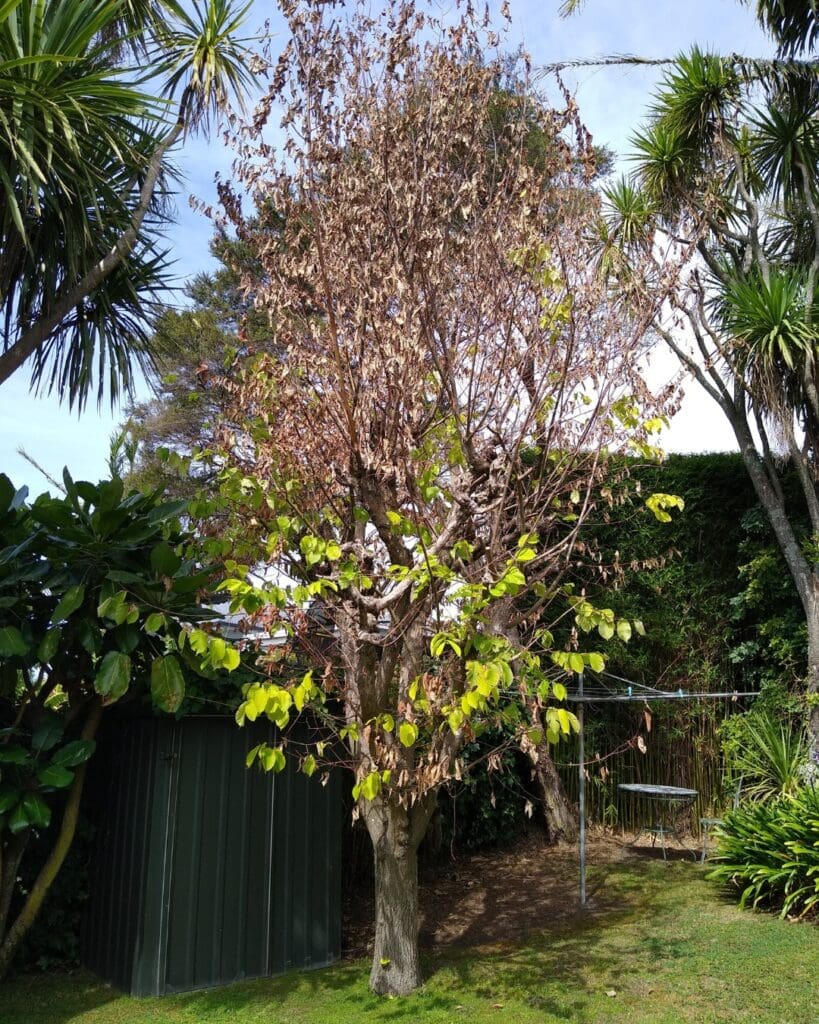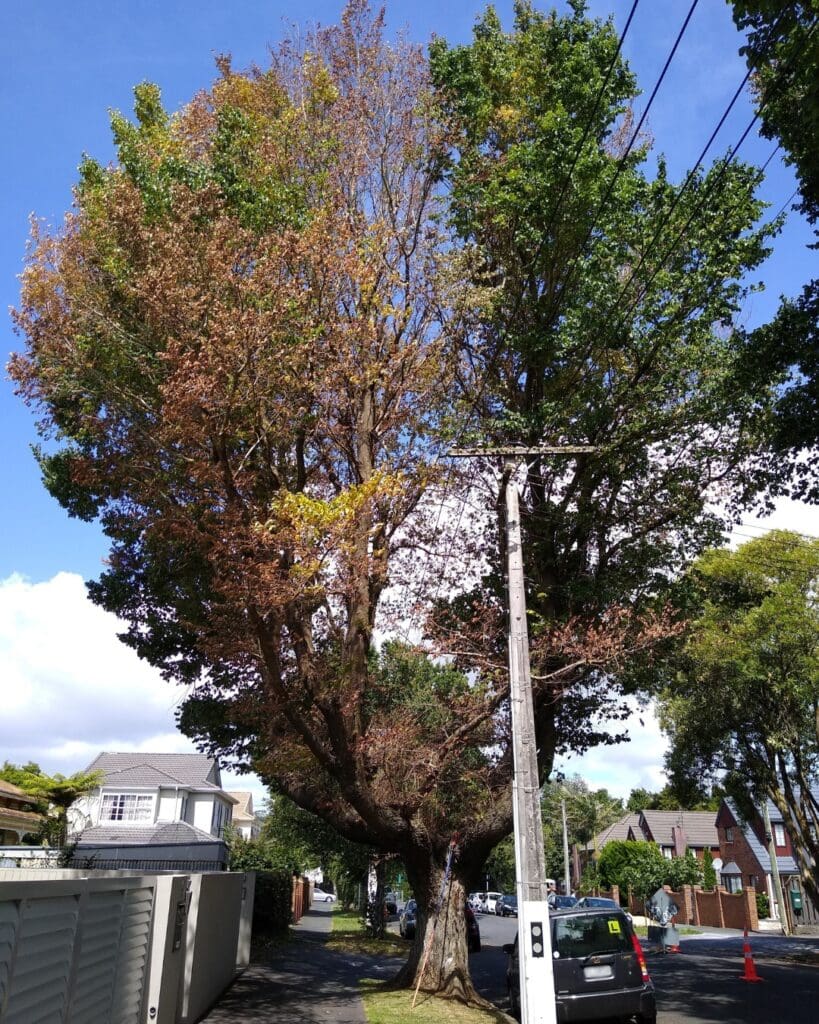Do you own an Elm tree in the waikato?
The fatal and fast spreading tree disease, Dutch Elm Disease, has been discovered in the Waipā District in Waikato.
Dutch Elm Disease (DED) – Cambridge, Te Awamutu & Surrounding Areas
Dutch elm disease is a devastating fungal infection affecting elm trees globally. In New Zealand, the disease caused by Ophiostoma ulmi is spread by elm bark beetles who carry the fungus from an infected tree and bore into new Elm trees nearby. It can also be spread via the trees connected root systems, movement of firewood or contaminated pruning tools. It does not affect trees unrelated to the Elm species.
Please contact us if you require any assistance in identifying an Elm tree with DED. We are here to help protect our beautiful Elm trees.
Identifying Dutch Elm Disease
Symptoms will develop as quickly as 4-5 weeks.
- Look for wilting and yellowing leaves: Dutch elm disease causes the leaves of infected trees to wilt, turn yellow, and eventually fall off.
- Check for dead branches: Infected trees will have dead branches that may still have dried, brown leaves attached.
- Look for bark discoloration: Dutch elm disease can cause discolored patches on the bark of infected trees. The bark may appear dark brown, black, or even greenish in color.
- Check for “flagging”: Flagging is when a single branch or section of branches on a tree dies, while the rest of the tree appears healthy. This is a common symptom of Dutch elm disease.
- Look for fungal growth: Infected trees may have fungal growth on the bark or at the base of the tree. This can appear as a white, powdery substance or as black, raised bumps.
Management of the Dutch Elm Disease
There is unfortunately no known cure for infected elm trees.
Management of the disease includes:
- Identification of the disease and removal of the infected trees. Wood from felled elm trees should be immediately chipped, burnt or buried on site or at a landfill site.
- Destroying root grafts between adjacent Elm trees before the infected tree is removed.
What can you do?
Infected trees need to be removed. The wood needs to be immediately chipped and burnt, or buried on site or at a landfill to avoid further spread of the disease.
If you suspect that a tree may be infected with Dutch elm disease, it is best to contact a certified arborist or tree care professional for an accurate diagnosis and treatment plan.
Dutch elm disease is a notifiable organism under the Biosecurity Act 1993. If you suspect DED, please report it.


